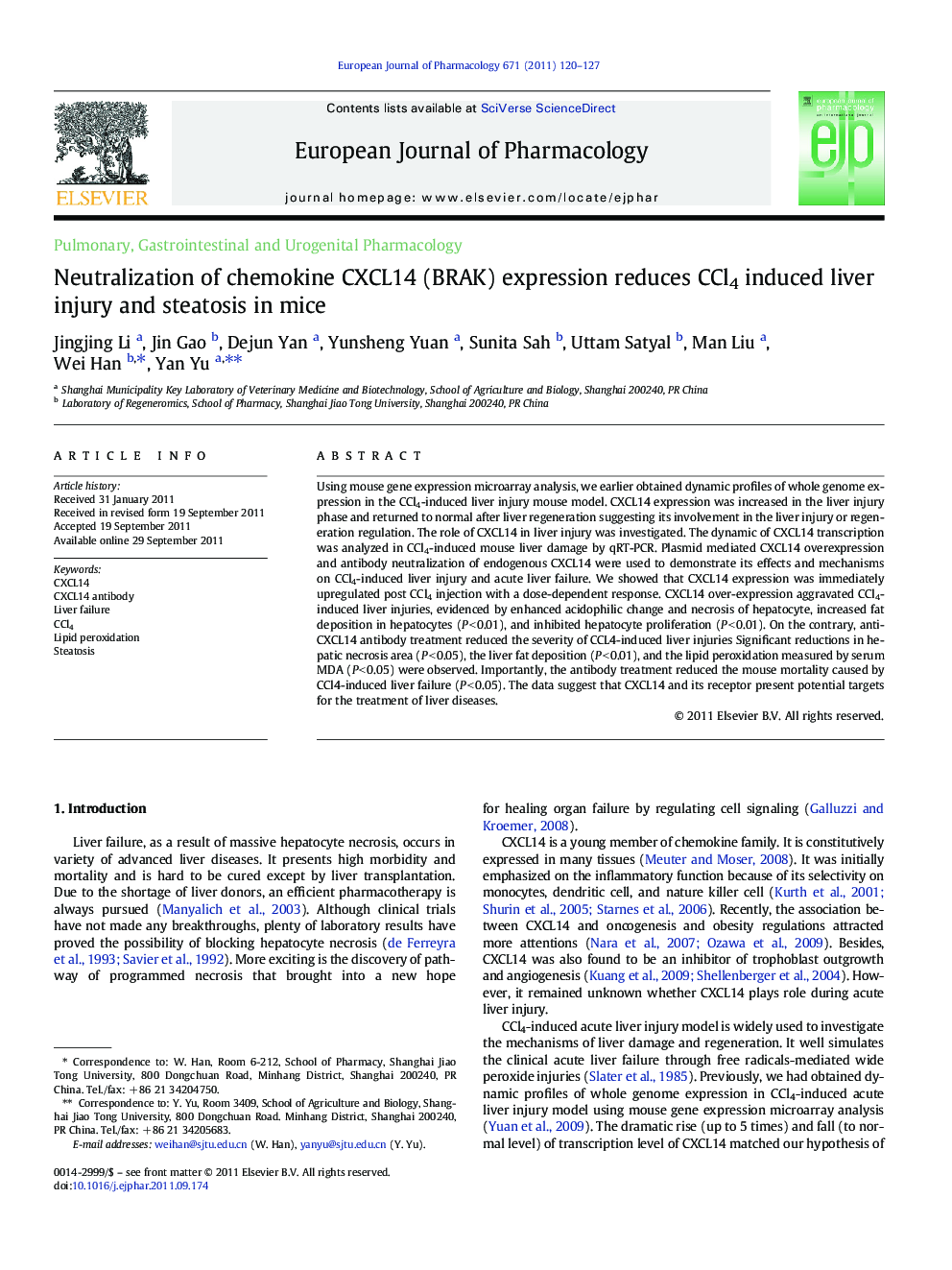| کد مقاله | کد نشریه | سال انتشار | مقاله انگلیسی | نسخه تمام متن |
|---|---|---|---|---|
| 5830045 | 1559011 | 2011 | 8 صفحه PDF | دانلود رایگان |
عنوان انگلیسی مقاله ISI
Neutralization of chemokine CXCL14 (BRAK) expression reduces CCl4 induced liver injury and steatosis in mice
دانلود مقاله + سفارش ترجمه
دانلود مقاله ISI انگلیسی
رایگان برای ایرانیان
کلمات کلیدی
موضوعات مرتبط
علوم زیستی و بیوفناوری
علم عصب شناسی
علوم اعصاب سلولی و مولکولی
پیش نمایش صفحه اول مقاله

چکیده انگلیسی
Using mouse gene expression microarray analysis, we earlier obtained dynamic profiles of whole genome expression in the CCl4-induced liver injury mouse model. CXCL14 expression was increased in the liver injury phase and returned to normal after liver regeneration suggesting its involvement in the liver injury or regeneration regulation. The role of CXCL14 in liver injury was investigated. The dynamic of CXCL14 transcription was analyzed in CCl4-induced mouse liver damage by qRT-PCR. Plasmid mediated CXCL14 overexpression and antibody neutralization of endogenous CXCL14 were used to demonstrate its effects and mechanisms on CCl4-induced liver injury and acute liver failure. We showed that CXCL14 expression was immediately upregulated post CCl4 injection with a dose-dependent response. CXCL14 over-expression aggravated CCl4-induced liver injuries, evidenced by enhanced acidophilic change and necrosis of hepatocyte, increased fat deposition in hepatocytes (PÂ <Â 0.01), and inhibited hepatocyte proliferation (PÂ <Â 0.01). On the contrary, anti-CXCL14 antibody treatment reduced the severity of CCL4-induced liver injuries Significant reductions in hepatic necrosis area (PÂ <Â 0.05), the liver fat deposition (PÂ <Â 0.01), and the lipid peroxidation measured by serum MDA (PÂ <Â 0.05) were observed. Importantly, the antibody treatment reduced the mouse mortality caused by CCl4-induced liver failure (PÂ <Â 0.05). The data suggest that CXCL14 and its receptor present potential targets for the treatment of liver diseases.
ناشر
Database: Elsevier - ScienceDirect (ساینس دایرکت)
Journal: European Journal of Pharmacology - Volume 671, Issues 1â3, 5 December 2011, Pages 120-127
Journal: European Journal of Pharmacology - Volume 671, Issues 1â3, 5 December 2011, Pages 120-127
نویسندگان
Jingjing Li, Jin Gao, Dejun Yan, Yunsheng Yuan, Sunita Sah, Uttam Satyal, Man Liu, Wei Han, Yan Yu,